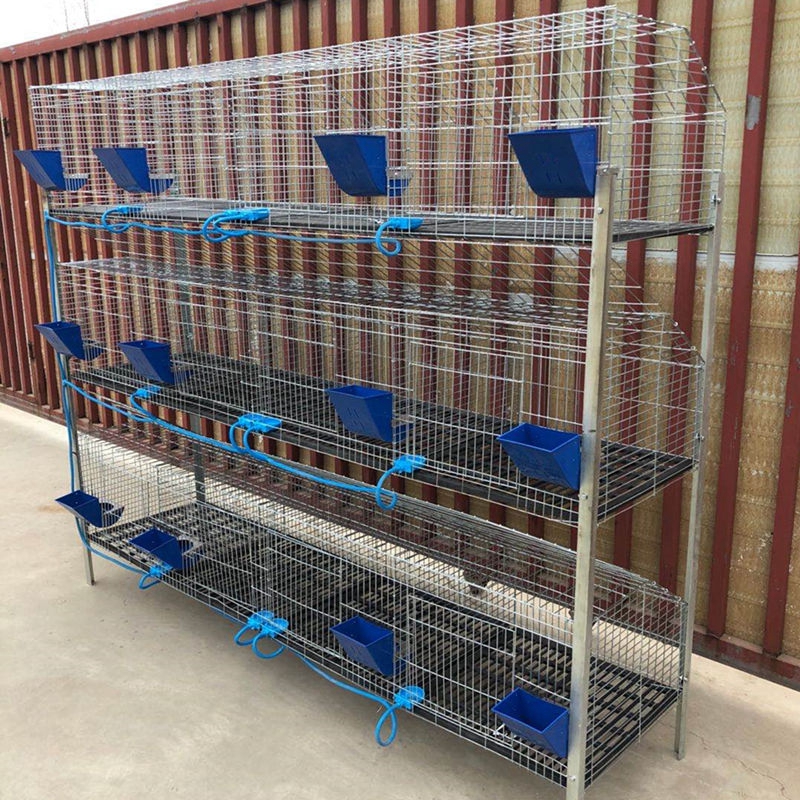Automatic Chicken Cage - Innovative Poultry Farming Solutions
Sep . 16, 2024 07:09 Back to list
Automatic Chicken Cage - Innovative Poultry Farming Solutions
The Rise of Automatic Chicken Cages Revolutionizing Poultry Farming
In recent years, the agricultural industry has witnessed significant changes driven by technological advancements. One of the most impactful innovations in poultry farming is the introduction of automatic chicken cages. These advanced systems are designed to enhance productivity, improve animal welfare, and streamline operations for farmers. This article explores the benefits and implications of automatic chicken cages in the modern agricultural landscape.
Automatic chicken cages, also known as automated poultry housing systems, utilize cutting-edge technology to manage the daily needs of chickens. These systems can automatically control feeding, watering, ventilation, and even environment monitoring. By minimizing manual labor, farmers can focus on other critical aspects of their business while ensuring that their chickens are well-cared for.
One of the primary advantages of automatic chicken cages is the increased efficiency they offer. Traditional poultry farming often involves extensive labor, where workers must frequently check and service the animals. With automatic systems, these tasks can be completed with minimal human intervention. Feed and water dispensers are designed to provide the right amounts at the right times, reducing waste and ensuring that every chicken receives adequate nutrition. This leads to healthier birds and ultimately higher egg production rates or meat yield.
Moreover, these cages improve environmental control within poultry houses. Automatic ventilation systems can respond to changing weather conditions, ensuring that chickens are kept in a comfortable environment. This not only helps in maintaining optimal growth rates but also significantly reduces stress among the birds. Healthier chickens are less susceptible to diseases, which is a major concern for poultry farmers. Consequently, this technological advancement can lead to reduced veterinary costs and lower mortality rates.
automatic chicken cage

Animal welfare is another critical factor driving the adoption of automatic chicken cages. These systems are designed to provide a more humane living space for chickens, allowing them to exhibit natural behaviors. For instance, modern cages often include features like nesting boxes, perches, and space for movement. By promoting a better quality of life for the birds, farmers can improve their overall productivity and meet the growing consumer demand for ethically raised poultry.
With increasing public awareness about food production methods, consumers are becoming more discerning about their food sources. They increasingly favor products that are produced sustainably and ethically. Automatic chicken cages align with these demands by offering a more humane and efficient way to raise poultry. This shift in consumer preference can help farmers who utilize these systems to gain a competitive edge in the market.
However, the implementation of automatic chicken cages is not without challenges. The initial investment can be significant, requiring farmers to weigh the long-term benefits against upfront costs. Additionally, there is a learning curve associated with the new technology, necessitating proper training for workers. Fortunately, many suppliers offer support and training, helping farmers transition to these modern systems smoothly.
In conclusion, automatic chicken cages represent a transformative step forward in poultry farming. By enhancing efficiency, improving animal welfare, and responding to consumer demands for ethical farming practices, these systems are revolutionizing the industry. As more farmers recognize the benefits of automation, it is likely that this technology will become the new standard in poultry production, contributing to a more sustainable and humane agricultural future.
-
Automatic Feeding Line System-Pan Feeder Nipple Drinker|Anping County Yize Metal Products Co., Ltd.
NewsJul.29,2025
-
Hot Sale 24 & 18 Door Rabbit Cages - Premium Breeding Solutions
NewsJul.25,2025
-
Automatic Feeding Line System Pan Feeder Nipple Drinker - Anping County Yize Metal Products Co., Ltd.
NewsJul.21,2025
-
Automatic Feeding Line System Pan Feeder Nipple Drinker - Anping County Yize Metal Products Co., Ltd.
NewsJul.21,2025
-
Automatic Feeding Line System - Anping Yize | Precision & Nipple
NewsJul.21,2025
-
Automatic Feeding Line System - Anping Yize | Precision & Nipple
NewsJul.21,2025






